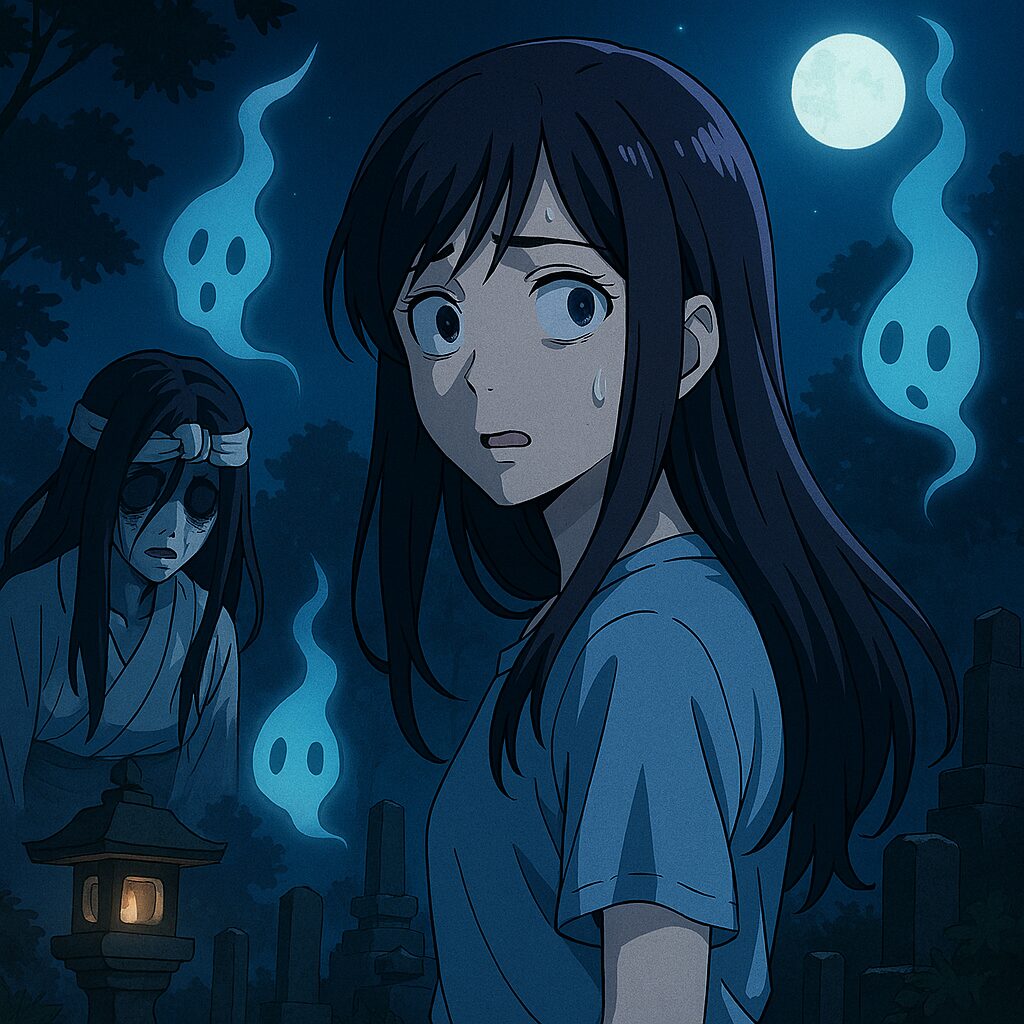In Japan, summer is not just about cicadas and fireworks—it’s also the season of ghost stories. While Western cultures associate horror with Halloween in autumn, Japan has a unique tradition of telling kaidan (ghost stories) during the hottest months of the year. But why?
This article explores the cultural roots of Japan’s summer ghost storytelling, the evolution of famous ghost tales, and how they compare to supernatural traditions around the world.
- 🧊 Why Ghost Stories Are a Summer Tradition in Japan
- 👻 Famous Japanese Ghost Stories
- 📜 Evolution of Ghost Lore in Japan
- 🌍 Global Comparison: Ghost Traditions Around the World
- 🕯️ Hyakumonogatari and Modern Ghost Events
- 🧠 What Ghost Stories Reveal About Japanese Views on Death
- ✨ Conclusion: Ghost Stories as Cultural Mirrors
🧊 Why Ghost Stories Are a Summer Tradition in Japan
1. Edo-Era “Cooling Theater”
During the Edo period, kabuki theaters staged ghost plays in summer to attract audiences seeking relief from the heat. These performances, known as “Suzumi Shibai” (cooling theater), used fear to evoke chills—literally.
Popular plays included:
- Yotsuya Kaidan – The vengeful spirit of Oiwa
- Botan Dōrō – A tragic love story between a man and a ghost
- Banchō Sarayashiki – The tale of Okiku and the broken plates
👉 Read more about summer ghost stories in Japan
2. Obon: When Spirits Return
Obon, held in mid-August, is a Buddhist tradition where ancestral spirits are believed to return to the world of the living. This spiritual closeness makes summer a natural time for ghost stories.
👉 Learn more about Obon and ghost lore
👻 Famous Japanese Ghost Stories
| Title | Summary | Themes |
|---|---|---|
| Yotsuya Kaidan | A betrayed woman returns as a ghost to seek revenge | Vengeance, betrayal, justice |
| Banchō Sarayashiki | A maid is falsely accused and killed over broken plates | Grief, injustice, haunting |
| Botan Dōrō | A man falls in love with a ghost, unaware of her true nature | Love, obsession, death |
| School Ghost Stories | Modern urban legends like Hanako-san and Kuchisake-onna | Contemporary fear, folklore, youth culture |
👉 Explore more Japanese ghost stories
📜 Evolution of Ghost Lore in Japan
Ancient & Medieval Periods
Ghosts were seen as ancestral spirits or mononoke—supernatural beings causing illness or misfortune. They were not always malevolent.
Heian to Kamakura Periods
Historical figures like Sugawara no Michizane and Taira no Masakado became feared onryō (vengeful spirits), influencing literature and Noh theater.
Edo Period
Ghosts became entertainment. Kaidan were printed in books, performed in theaters, and shared in gatherings like Hyakumonogatari Kaidankai (100 ghost stories).
Modern Era
Ghosts entered digital spaces—films like Ringu (The Ring) introduced Sadako, a ghost emerging from videotapes. Today, ghosts haunt social media and messaging apps.
👉 Read about the evolution of Japanese ghost culture
🌍 Global Comparison: Ghost Traditions Around the World
| Region | Season | Traditions |
|---|---|---|
| Japan | Summer | Obon, cooling theater, Hyakumonogatari |
| USA & Europe | Autumn | Halloween, horror films, costume parties |
| China | Lunar July | Ghost Month, ancestor rituals |
🕯️ Hyakumonogatari and Modern Ghost Events
Hyakumonogatari Kaidankai was a popular Edo-era gathering where 100 candles were lit and extinguished one by one after each ghost story. The final candle was said to invite real spirits.
Today, ghost-themed events thrive across Japan:
- Yokai Bon Odori – A monster-themed summer dance festival
- 怪々YOKAI祭 – Held at Toei Kyoto Studio Park
- 奇怪夜行 – A ghostly lantern parade in Yanagawa
👉 Discover Japan’s ghost festivals
🧠 What Ghost Stories Reveal About Japanese Views on Death
Japanese ghost stories are not just scary—they’re emotional, philosophical, and spiritual. They reflect a culture that respects the dead, fears unresolved emotions, and seeks harmony between worlds.
Even today, ghost stories continue to evolve, adapting to modern fears and technologies while preserving ancient beliefs.
✨ Conclusion: Ghost Stories as Cultural Mirrors
Japanese ghost stories are more than seasonal entertainment—they’re cultural mirrors reflecting history, emotion, and spirituality. They offer insight into how people cope with death, memory, and the unknown.
To our international readers: How does your culture engage with the dead? Do you tell ghost stories in summer, autumn, or not at all?
Let us know in the comments—and stay cool this summer, wherever you are.



コメント